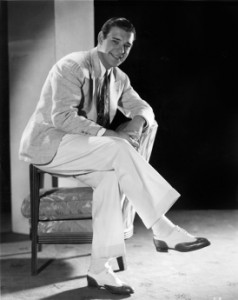LON CHANEY, JR
I didn’t feel I was entitled to take my dads name. I didn’t feel I was an actor yet.

COMING SOON
Lon Chaney, Jr. was born Creighton Tull Chaney on February 10, 1906 in Oklahoma City, Oklahoma. He was the son of silent screen star Lon Chaney and singing sensation Francis Cleveland Creighton (Cleva).
Creighton came into the world prematurely at seven months on a cold winter day. Young Cleva had a very difficult labor and the baby was born lifeless. After repeated attempts by the doctor to resuscitate the infant, Lon grabbed his son, ran outside and submerged him into the icy waters of Belle Isle Lake reviving the dying infant. Cleva’s mother, Matilda Creighton (Mattie), a practical nurse in Oklahoma City, assisted the doctor throughout the birth and helped nurse the infant back to health. Out of necessity, Lon created an incubator from a shoebox lined with cotton for warmth and holes punched in it for air.
By the age of 6 months, Creighton made his first appearance in show business as a prop in one of his father’s stage acts. As a baby and young boy, he traveled with his parents by train in barnstorming vaudeville shows. Often these troupes went broke on the road leaving the family stranded in various parts of U.S. and Canada. They arrived in California in 1910 and found consistent employment with Lon as a stage manager, choreographer and actor, while Cleva became a popular singer in Cabaret shows. Their marriage became strained due to working conditions, money and jealousy.
In April of 1913 after continued disputes, Cleva entered the Majestic Theater where Lon was working and in a suicidal attempt swallowed a vial of poison. The poison damaged her vocal chords putting an end to her career and marriage to Lon.
The public scandal also damaged Lon’s stage career and he was forced to seek new employment. He turned to the booming industry of silent films. This move began one of the most legendary acting careers in film history. Between 1913 and 1930 he played more the 150 widely diverse roles, frequently villainous and sometimes bizarre and macabre, almost always pathetic and moving.
By 1918 with over a hundred film credits for Universal, he asked for a raise and was refused. Shortly thereafter, he left the studio to become a freelance actor.
William S. Hart, a popular Western movie star of the time, contacted Lon requesting him to play a villain opposite Hart in “Riddle Gawne.” Lon received high praise for his performance in the role and considered it as his first big break.
In 1919, Lon received critical acclaim for his role in George Loane Tuckers “The Miracle Man” portraying “The Frog,” a con man who pretends to be cripple and is miraculously healed.
Lon often suffered to achieve the character he was portraying. In 1920, for “The Penalty,” he had his legs bound tightly behind him in a harness, inserting his knees into leather stumps devised as artificial legs with his feet bound at the thighs. This was a very painful ordeal that would cut circulation to his legs resulting in broken blood vessels.
For “The Hunchback of Notre Dame” in 1923 he devised a hump and harness reportedly weighing in excess of 50 pounds, twisting his torso to feel the pain of Quasimodo. He delivered an outstanding performance earning him worldwide fame.
In 1924, Lon starred in Metro-Goldwyn’s “He Who Gets Slapped” a circus melodrama voted one of the best films of the year. The success of this movie led to a series of contracts with MGM Studios for the next five years.
In 1925, Lon created the makeup that secured him into film immortality with his portrayal as “Erik,” the tortured opera ghost in “The Phantom of the Opera.”
Due to his ability to portray an endless variety of characters, Lon became known as “The Man of a Thousand Faces.”
He, like Charlie Chaplin, shunned the transition to talking films and was one of the last silent screen stars to holdout against speaking roles. His stock and trade as he professed “was in makeup and the art of pantomime.”
In 1930 he made his one and only talking film, a remake of 1925 “The Unholy Three.” He played Echo, a crook ventriloquist and used five different voices in the movie, thus proving he could make the transition from silent films to the talkies. Unfortunately, less than two months after the film’s release on August 26, 1930, he died from a throat hemorrhage.
MGM Studios was ordered to stop production and observe a period of silence while Lon’s remains were lowered to their final resting place. The world mourned his passing and lost one of film’s most unique and greatest actors.
This year marks the 80th year of his passing and his legacy continues to grow. He was a one of a kind actor that left a mark on an industry that will never be replaced. The characters and makeup he created continue to inspire new artists of today.

